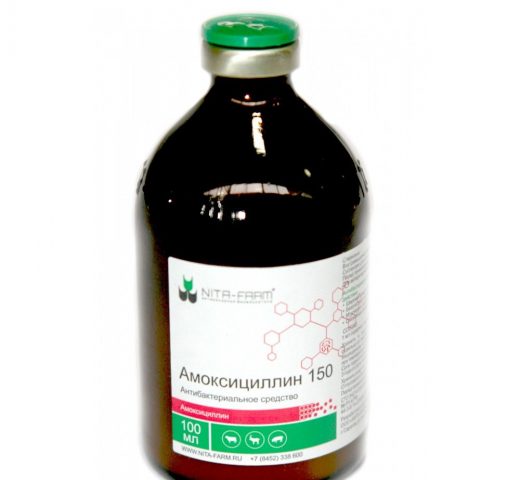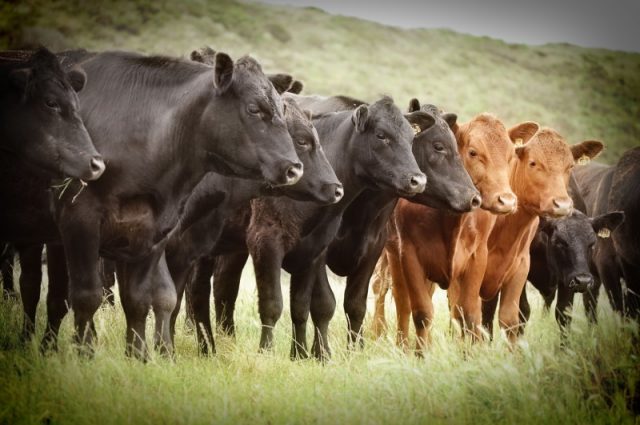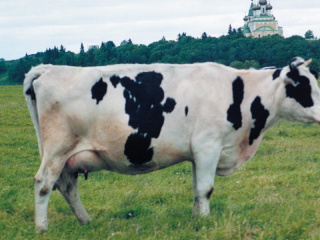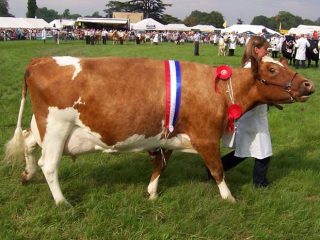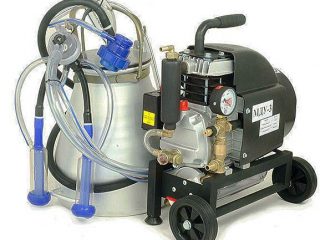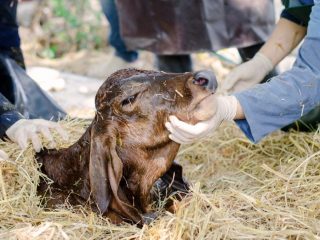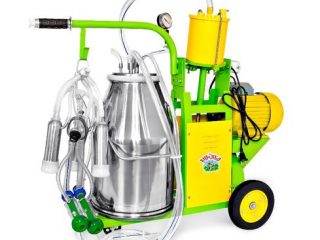Content
With the development of new technologies, microorganisms harmful to health are also constantly being improved and require people to create more and more modern drugs to combat them, including in veterinary practice. But there are some exceptions. Thus, amoxicillin for cattle is still popular because it is both an affordable, safe and effective treatment for many bacterial infections, including their new varieties.
Pharmacological group and action of amoxicillin
Amoxicillin is an antibacterial drug that can be classified as a semi-synthetic penicillin.
The mechanism of action of amoxicillin on cattle is that it disrupts the osmotic balance, which in turn leads to the complete death of the bacterial cell itself. The drug usually contains an oily filler, which ensures its long-lasting effect on the animal’s body.
At the same time, the medicine can be absorbed quite quickly into the blood and distributed throughout the muscle tissues and internal organs of cattle.Literally 2 hours after amoxicillin was injected into the muscle (or under the skin), its concentration in the blood plasma becomes maximum. In this case, the therapeutic effect lasts for 48 hours.
It is also convenient that the drug is excreted from the body of cattle in a completely natural way, with the help of urine, sometimes with bile, while remaining in an unchanged form.
Amoxicillin is characterized by a very wide antibacterial spectrum of action. It is active against most gram-negative and gram-positive microorganisms, such as:
- Actinomycesspp;
- Actinobacillus spp;
- Bacillus anthracis;
- Clostridium spp;
- Corynebacterium spp;
- Escherichia coli;
- Haemophilus spp;
- Listeria monocytogenes;
- Pasteurellasp;
- Proteus mirabilis;
- Salmonella spp;
- Streptococcus spp and others.
If we evaluate the degree of impact of Amoxicillin on the body of cattle, then it is classified as a moderately dangerous substance (that is, hazard class 3).
Release form and composition
In general, Amoxicillin for animals is available in various forms:
- suspensions for injections;
- solutions for injections;
- powders;
- pills.
But for the treatment of cattle, Amoxicillin is used mainly in the form of an injection suspension. Most often it comes in the form of a 15% solution, so it can be easily dosed.
Amoxicillin can be produced in dark glass bottles of 10, 100 and even 250 ml, hermetically sealed. For cattle, there is little point in using small 10 ml bottles. Because even one small heifer may need several similar bottles.
The suspension has the appearance of an oily liquid, the color of which can vary from white to light yellow. During long-term storage, Amoxicillin may even separate slightly, but when shaken it instantly acquires a uniform consistency.
In addition to the active ingredient itself, the drug contains some auxiliary components:
- 10 mg benzyl alcohol;
- up to 1 ml of vegetable oil;
- 2 mg butylated hydroxytoluene;
- 15 mg aluminum monostearate.
Analogues of Amoxicillin are:
- Amoxilong 150 LA;
- Amoxisan;
- Amoxisan;
- Vetrimoxin LA;
- Clamoxyl
Indications and contraindications
If you follow the instructions for use, Amoxicillin is prescribed for certain cattle diseases.
Infections:
- Gastrointestinal tract (diarrhea, salmonellosis, enteritis, colibacillosis);
- respiratory tract (pneumonia, rhinitis, bronchitis);
- genitourinary system (vaginitis, cystitis, metritis, leptospirosis);
- soft tissues, skin and hooves (abscess, arthritis, necrobacteriosis);
- joints.
Amoxicillin is also used to treat umbilical infections, atrophic rhinitis, mastitis and to prevent postoperative surgical infections caused by microorganisms that may be sensitive to Amoxicillin.
The only contraindication to the use of this antibiotic may be the individual hypersensitivity of a particular animal to antibiotics belonging to the penicillin group.
Method of administration and dosage of amoxicillin for cattle
For all types of animals, including cattle, a single dose of Amoxicillin is used. It is 1 ml of suspension per 10 kg of animal weight (that is, per 1 kg of cow or bull weight there is 15 mg of the main active ingredient - amoxicillin trihydrate).
Amoxicillin is administered using a syringe under the skin or inside a muscle. A single administration is usually sufficient. But if, after 48 hours, that is, two days, the animal’s condition requires continued treatment, then it can be re-administered. Before each administration of Amoxicillin, the vial must be shaken thoroughly to obtain a homogeneous composition.
It is allowed to inject no more than 20 ml of Amoxicillin into one place using a syringe. This means that for most cattle, the drug will need to be administered at at least two points. And for some especially large individuals, weighing more than 600 kg, even at three points.
Side effects
If Amoxicillin is used for cattle in full accordance with the recommendations given above, then no side effects or complications are usually observed. In rare cases, some animals may experience a local reaction, which appears as a slight swelling at the injection site. But the swelling resolves on its own within a couple of days.
If suddenly an animal exhibits individual hypersensitivity to Amoxicillin, then the use of the drug for cattle is immediately stopped. And if any allergic reactions occur, he is prescribed antihistamines, as well as symptomatic therapy.
Overdose
An overdose when administering the drug to cattle can only occur if the actual weight of the animal is incorrectly assessed.If this happens, then possible symptoms may manifest themselves in the form of a depressed state, dysfunction of the gastrointestinal tract (diarrhea and others) or swelling at the site of drug administration.
Drug interactions
Amoxicillin for cattle should not be mixed in the same syringe with any other medications.
Also, do not use this antibacterial agent simultaneously with:
- other antibiotics of the penicillin group;
- thiamphenicol;
- cephalosporins;
- chloramphenicol;
- fluoroquinolones.
Special Recommendations
When using Amoxicillin to treat cattle, animals should be slaughtered no earlier than 28 days after the last injection. If animals were forced to be killed before the expiration of this period, their meat can be used as food for predatory or fur-bearing animals.
When treating dairy animals with Amoxicillin, their milk is allowed to be used for food no earlier than 96 hours (4 days) have passed since the last use of the drug. Otherwise, it can be boiled and used to feed other animals.
Terms and conditions of storage
Amoxicillin for the treatment of cattle should be stored in hermetically sealed packaging from the manufacturer in a room with a temperature of + 5-25 ° C. The place should be dry, out of reach of children and protected from light. Food products should not be located nearby.
Subject to the above storage conditions, Amoxicillin can be stored hermetically sealed for up to 3 years from the date of manufacture.
If the bottle has been opened, its contents must be used up within 28 days and stored in the refrigerator after opening.
If the drug Amoxicillin has expired, then its use for humans and cattle is impossible; it must be disposed of in any convenient way.
Conclusion
Amoxicillin for cattle is a convenient, inexpensive and multifunctional veterinary drug for the treatment of a variety of bacterial infections.
